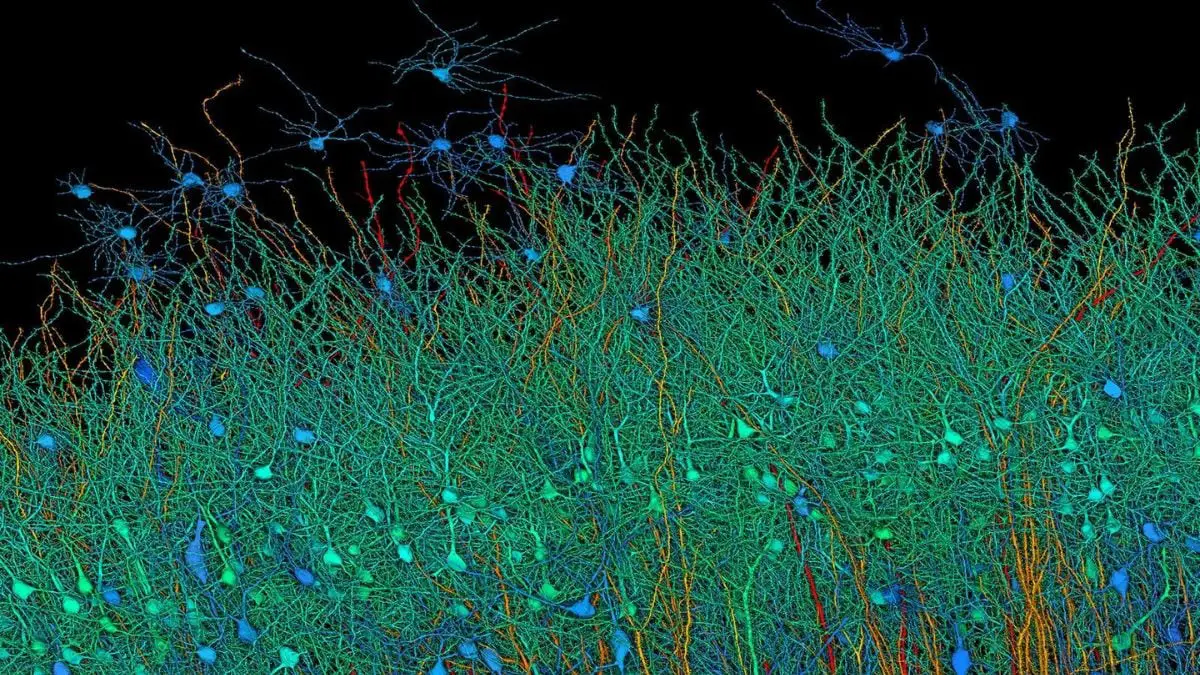A groundbreaking project by Harvard University and Google has produced the most detailed map of human brain connections to date. This achievement focuses on a cubic millimetre of the cerebral cortex, extracted from a patient during epilepsy surgery in 2014. Over a decade, a team of biologists and machine-learning experts meticulously analysed this small tissue sample, which contains roughly 57,000 cells and 150 million synapses. Their work marks a significant advancement in brain science, providing an unprecedented level of detail in understanding the brain’s wiring.
Advanced Mapping Techniques
The process began with staining the brain tissue using heavy metals, which bind to lipid membranes in cells, making them visible under an electron microscope. The tissue was then embedded in resin and sliced into extremely thin sections, each just 34 nanometers thick. This technique converted a complex 3D problem into a more manageable 2D one, resulting in a colossal dataset of 1.4 petabytes. To piece together these 2D slices into a coherent 3D model, the team utilised machine-learning algorithms developed in collaboration with Google. This involved aligning the images and automatically segmenting the different cell types, although manual adjustments were required to refine the accuracy of these segments.
Insights and Challenges
The resulting map reveals a wealth of information about the brain’s cellular structure. It has identified neurons with over 50 synapses, a detail previously overlooked and potentially crucial for understanding cortical processing. However, the project faces challenges, such as manually verifying the vast amount of data to correct segmentation errors. Some cells, like unidentifiable egg-shaped structures and tangled cells, remain enigmatic. These abnormalities could provide new insights but require further investigation.
Implications for Future Research
The brain map is now publicly accessible, opening up new avenues for research. It holds promise for advancing our knowledge of mental health disorders, such as schizophrenia, and could inspire improvements in AI by mimicking brain functions. Future projects include expanding this research to whole mouse brains and additional human brain regions, potentially leading to further breakthroughs in neuroscience and related fields.










